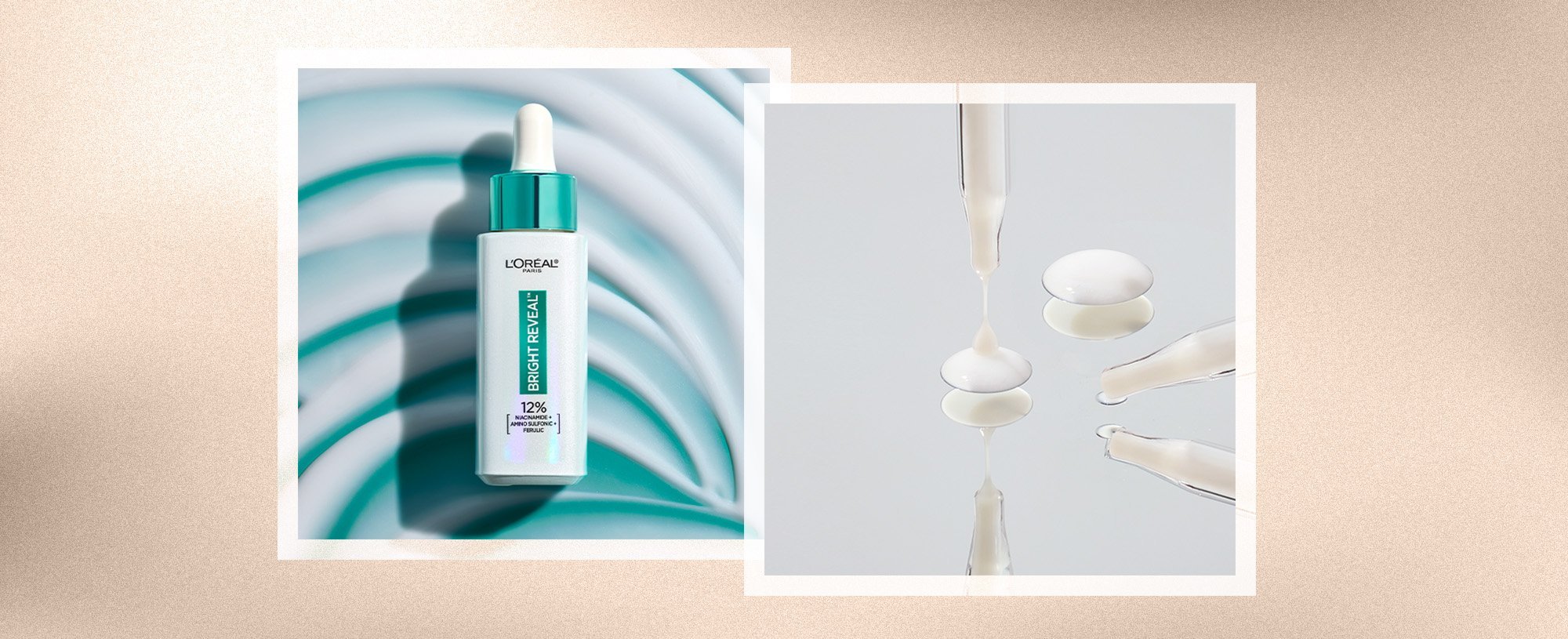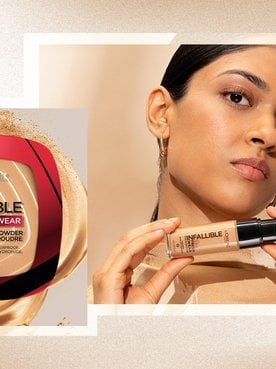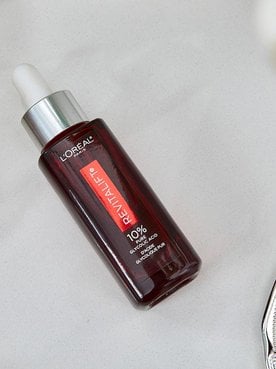In this article
- Understanding Niacinamide
- When Should You Use Niacinamide in Your Routine?
- How Often Can You Use Niacinamide?
- What Should You Not Layer Niacinamide With?
- Can You Use Niacinamide if You’re Using Retinoids?
- Which Is Better: Niacinamide Serum or Niacinamide Moisturizer?
- Who Should Avoid or Be Cautious With Niacinamide?
Niacinamide serums are among the most popular skincare staples of the past ten years, and for good reason. Known for brightening, calming, and improving skin texture, this powerful ingredient has become a go-to for beauty lovers who want visible results without harshness. Still, many people feel unsure about when to use niacinamide serum—morning, night, or both—and how to layer it with other products. The good news is that niacinamide is gentle, versatile, and easy to pair with other everyday staples. Keep reading to learn what niacinamide is, how it benefits the skin, plus details on when and how to use niacinamide serum for bright, healthy-looking skin.
Understanding Niacinamide
Before you add anything new to your skincare routine, it helps to understand what it does and how to use it. With niacinamide, the payoff is big: it’s one of the most effective, well-tolerated, and multipurpose ingredients available. Keep reading for an in-depth rundown on niacinamide’s many uses and benefits for skin.
What is niacinamide?
Niacinamide is a form of vitamin B3 used in skincare to visibly brighten tone, smooth texture, and support a healthy skin barrier. It’s found in serums, moisturizers, cleansers, and eye creams, making it highly versatile. Most formulas include concentrations of 5% or less, though some niacinamide serums are stronger. Per the Cleveland Clinic, dermatologists generally consider it safe for all skin types, even sensitive skin. Still, as with any skincare ingredient, it’s best to introduce it to your skincare routine slowly to help minimize the potential for redness or irritation.
What are the benefits of niacinamide?
Niacinamide is incredibly versatile—products with this ingredient can help brighten the skin, address the visible signs of aging, reduce the appearance of discoloration, and more. Per the Cleveland Clinic, niacinamide serums and other products with niacinamide can help:
- Diminish the look of dark spots and post‑blemish marks for a more even tone
- Soften the appearance of fine lines and wrinkles for smoother skin
- Help calm visible redness and unevenness
- Balance oiliness while still boosting hydration, keeping skin comfortable
- Reduce the look of enlarged pores so makeup applies more evenly
- Defend against environmental stressors with antioxidant support
Whether you’re focused on brightening, balancing, or anti‑aging, niacinamide is an ingredient that adapts to your needs and pairs easily with your other everyday essentials.
When Should You Use Niacinamide in Your Routine?
One of the reasons niacinamide is so well-loved by beauty enthusiasts is its flexibility. If you’re wondering “Should I use niacinamide in the morning or night?”, the truth is that you can use it any time. The timing often depends on the format you choose and what the rest of your routine looks like. As a general rule, we recommend letting your formula of choice help you determine when to use niacinamide in your routine.
Niacinamide serums
Using a niacinamide serum is a great way to get a concentrated dose of this skin-brightening B vitamin. They’re also generally well-suited for daily use. If you’re looking for a niacinamide serum to add to your routine, we recommend the L’Oréal Paris Bright Reveal 12% [Niacinamide + Amino Sulfonic + Ferulic Acid] Dark Spot Serum. The lightweight, non-greasy formula provides gentle exfoliation and helps visibly fade all types of dark spots, including post-acne marks, age spots, and sun spots. It’s suitable for all skin types and fits easily into your existing skincare routine. As for when to use niacinamide serum, we typically recommend applying products in order of consistency. That means your serum should come after toner, but before richer lotions or creams.

Moisturizers with niacinamide
There are plenty of moisturizers with niacinamide on the market—you’ll want to gauge your usage based on the other ingredients in your chosen formula. A basic hydrating moisturizer with niacinamide can be used morning or night (or both), while anti-aging formulas may be better suited for nighttime use. One of our favorite anti-aging formulas with niacinamide is the L'Oréal Paris L'Oréal Paris RevitaLift Pressed Night Moisturizer with Retinol + Niacinamide. The gentle formula provides up to 24 hours of hydration and helps target the visible signs of aging, including fine lines, wrinkles, and dullness. Keep in mind that retinol can increase your skin’s sensitivity to the sun, so you’ll want to be extra diligent about your SPF usage in the morning. After cleansing your face and applying your daytime serum, complete your routine withthe L'Oréal Paris RevitaLift Triple Power Moisturizer with SPF 30, which hydrates, firms, and helps protect your skin from UV rays.
Facial peels
Niacinamide is often paired with exfoliants to reduce irritation while boosting results. The L’Oréal Paris Bright Reveal Dark Spot Exfoliant Peel, for example, contains niacinamide and a trio of exfoliating acids (AHA, BHA, and PHA). The potent formula helps reduce the appearance of dark spots, brightens the skin, and helps refine skin texture. It’s also suitable for all skin types and tones, making it a great exfoliant to reach for if you have sensitive skin.
Keep in mind, however, that this is one niacinamide product that you don’t want to use daily. We recommend using it four times per week (at night). If you’re new to chemical exfoliation or have easily irritated skin, start with once-weekly usage and gradually increase the frequency as your skin acclimates. You’ll also want to apply plenty of SPF the next morning, as alpha-hydroxy acids, like retinoids, can increase your skin’s sensitivity to the sun.

How Often Can You Use Niacinamide?
Most people can use niacinamide serum twice daily. Begin with daily use to see how your skin responds, then increase to morning and evening if everything feels balanced. If you notice new redness or warmth, scale back to once daily until your skin adjusts.
A steady rhythm beats doing too much at once. Your skin will tell you when the cadence is right. A calm look, smoother feel, and a more even appearance are signs your frequency suits you. Keep the rest of your routine simple while you adjust, then layer in additional steps as needed.
What Should You Not Layer Niacinamide With?
You don’t need to overcomplicate your skincare routine by mixing multiple active ingredients at once. While niacinamide serums generally work well with hydrating and brightening ingredients like hyaluronic acid and vitamin C, avoid layering too many strong actives without professional guidance. Stick to pre-formulated products—dermatologists and cosmetic chemists design them for safe, effective results.
Can You Use Niacinamide if You’re Using Retinoids?
Yes, niacinamide and retinol are a well-known power duo. Niacinamide can help offset some of retinol’s drying effects, making it easier to tolerate. You can either use niacinamide in the morning and retinol at night, or choose a formula that combines both, like theL'Oréal Paris L'Oréal Paris RevitaLift Pressed Night Moisturizer with Retinol + Niacinamide. Everyone’s skin is different, so if you’re unsure, check with a dermatologist for personalized guidance.

Which Is Better: Niacinamide Serum or Niacinamide Moisturizer?
Skincare isn’t one-size-fits-all, so what works well for you might not work for someone else (or vice versa). As such, it’s best to select your products based on the results you’re looking for. Niacinamide serums are targeted, concentrated treatments that typically provide rapid results, while moisturizers with niacinamide deliver hydration with added benefits. If you want to tackle your concerns quickly, reach for a niacinamide serum. If hydration and anti-aging are your main goals, try a moisturizer. For the best of both worlds, you can use both in the same routine.
Who Should Avoid or Be Cautious With Niacinamide?
Niacinamide is safe for most skin types, but some people may experience redness or irritation if they use too much too quickly. Always patch test before applying a new formula to your entire face. If your skin is sensitive, start with a lower concentration or less frequent application, and increase gradually as your skin adjusts.
Next Up: Why Hyaluronic Acid Serum Is a Skincare Game-Changer
Photo courtesy of L’Oréal Paris







